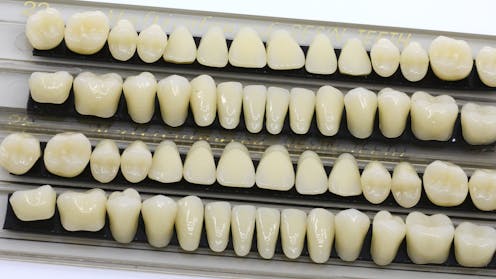
New research highlights how teeth can serve as a detailed record of an individual’s childhood climate and dietary experiences. By analyzing the teeth of various subjects, including a woman born in Brisbane in 1990, scientists have uncovered methods to trace the climatic history that shaped early lives. This study, conducted by researchers at the Australian National University, offers insights into how environmental factors influenced development long before modern technology.
The research team focused on how changes in climate, such as rainfall and temperature, affect the isotopic composition of drinking water, particularly the ratios of oxygen isotopes, oxygen-18 and oxygen-16. These isotopes leave distinct marks in tooth enamel that reflect environmental conditions during childhood. By using a specialized tool known as the Sensitive High Resolution Ion MicroProbe (SHRIMP), the team was able to vaporize and analyze small areas of tooth enamel to reveal these isotopic trends.
This innovative approach allowed the researchers to correlate the isotopic data with historical weather patterns. For instance, the enamel from the Brisbane subject showed a clear relationship between her tooth development and significant rainfall events, such as a cyclone that impacted the region during her infancy. The isotopic values indicated lower ratios during wet periods, while higher values emerged during drier seasons.
The findings provide a nuanced understanding of how early childhood experiences are recorded in teeth. After the child reached her first birthday, the isotopic markers became more complex. This shift likely coincided with dietary changes as she began consuming a wider variety of foods beyond breast milk, which carry different isotopic signatures.
In addition to climate data, the SHRIMP technology also enables researchers to investigate dietary habits through measurements of nitrogen isotopes found in tooth dentine. A known relationship exists between the ratios of nitrogen-15 and nitrogen-14 and a child’s diet. The study tracked the subject’s dietary transition from breastfeeding to solid foods, revealing significant changes in nitrogen isotope ratios that aligned with her weaning process.
The implications of this research extend beyond individual cases. The methodology represents a significant advancement in isotopic studies, enabling fine-scale analysis that was previously unattainable. Traditional sampling methods, which often involve drilling or sawing teeth, have limitations in identifying short-term dietary and environmental changes. The precision of the SHRIMP technique allows for more detailed examinations, opening new avenues for understanding ancient populations.
For example, the team applied this method to study Neanderthal children from the Rhône basin in France, revealing insights into their seasonal experiences. By analyzing thin slices of their teeth, researchers could estimate the seasons in which these individuals were born and weaned, offering a glimpse into their lives approximately 250,000 years ago.
This research not only sheds light on individual childhood experiences but also provides valuable data regarding human evolution and adaptation to changing climates. The isotopic differences observed in ancient fossils, including those of apes from 17 million years ago, align with evidence suggesting that climate shifts significantly influenced the development of early human ancestors.
Overall, this groundbreaking work underscores the potential of dental analysis to uncover stories about our past. As researchers continue to refine these techniques, they will likely unveil more about the intricate connections between climate, diet, and human development, revealing the lasting impact of environmental factors on our lives.
Tanya M. Smith, one of the lead researchers, emphasizes the importance of this work, stating, “Teeth hold many more tales, and technological breakthroughs will continue to reveal hidden details of our ancient humanity.” The study is a reminder of how our modern lifestyles, influenced by climate change and dietary habits, can also leave their mark on future generations.






